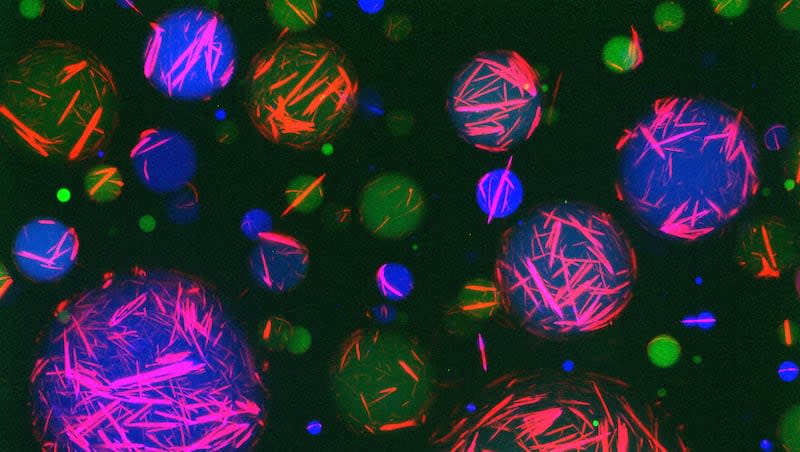UNC researchers create artificial cells that act like living cells

Researchers at University of North Carolina Chapel Hill have manipulated DNA and proteins to create artificial cells that look and act like the body’s natural living cells. It’s a scientific first they predict could impact regenerative medicine, drug delivery systems and diagnostic tools one day.
“With this discovery, we can think of engineering fabrics or tissues that can be sensitive to changes in their environment and behave in dynamic ways,” said Ronit Freeman, an associate professor in the Applied Physical Sciences Department who came up with, funded and oversaw the project in her lab. The resulting study is published in Nature Chemistry.
“I hope that the ability to build synthetic cells with emergent properties will enable us to design innovative solutions for diagnostics, reactors for therapeutics, and will enable us to tackle new problems that will impact everyday life,” Freeman told Deseret News by email.
DNA and proteins are “essential building blocks of life,” the university reported in a news release on the project. “Cells and tissues are made of proteins that come together to perform tasks and make structures. Proteins are essential for forming the framework of a cell, called the cytoskeleton. Without it, cells wouldn’t be able to function. The cytoskeleton allows cells to be flexible, both in shape and in response to their environment.”
The researchers said they used a programmable peptide-DNA technology that directs peptides to work with repurposed genetic material to form a cytoskeleton. DNA is not naturally part of a cytoskeleton, but in this process sequences of DNA were reprogrammed to become “an architectural material, binding the peptides together.” When that was placed in a water droplet, per Freeman, “the structure took shape.”
John Anderer described the accomplishment this way for Study Finds: “At the core of every cell lies the cytoskeleton — a dynamic, protein-rich scaffolding that gives the cell its structure and flexibility. Without this vital framework, cells would be mere amorphous blobs, unable to divide, migrate or perform any of their essential tasks. By mastering the construction of artificial cytoskeletons, Freeman’s team has cracked the fundamental code of cellular architecture.”
Future applications?
With the ability to program DNA this way, the researchers say they can build cells that have specific functions and also manage a cell’s response to external stressors. The artificial cells are not built for longevity, but to perform a desired task. That’s important because living cells are more complex, but they are also “more unpredictable and more susceptible” in certain conditions, including severe heat. Freeman said the artificial cells remained stable even at 122 degrees Fahrenheit, which means such cells could be made in environments “normally unsuitable for human life.”
Per the study, “Our programmable peptide-DNA nanotechnology approach is a powerful platform towards the construction of functional, fully artificial cells.” The platform “allows the plug and play” of different peptide assemblies or DNA designs to create functional structures.
In the release, Freeman predicts that “this synthetic cell technology will not just enable us to reproduce what nature does but also make materials that surpass biology.”

